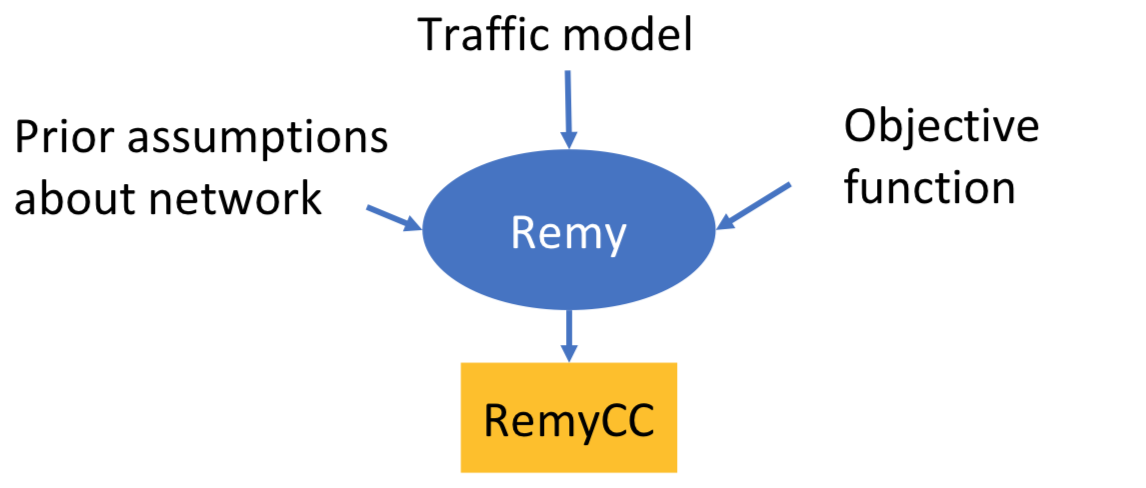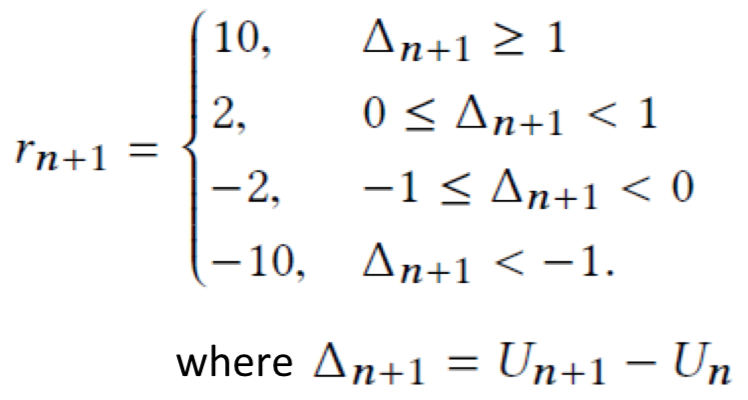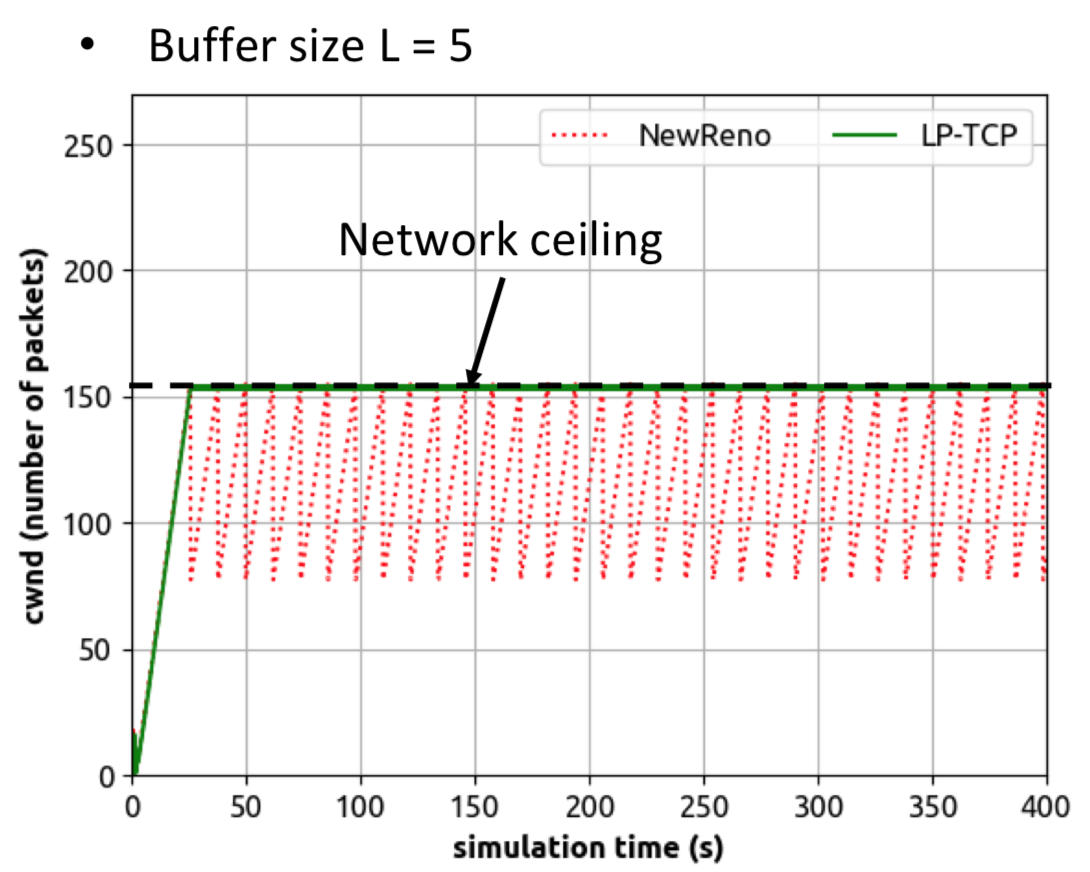- Link2Paper
- [Author: Y Kong et al.]
- [Keywords: TCP, Congestion Control, Reinforcement Learning]
Motivation
Previous congestion control methods (NewReno, Vegas[1], Cubic[2], Compound[3]) are:
- Mechanism-driven instead of objective-driven
- Pre-defined operations in response to specific feedback signals
- Do not learn and adapt from experience
Related Work
RemyCC [4]

- Delay-throughput tradeoff as objective function
- Offline training to generate lookup tables
- Inflexible for the network & traffic model changes
Q-TCP [5]
- Based on Q-learning
- Designed with mostly a single flow in mind
- Sufficient buffering available at the bottleneck
Contribution
Loss prediction based TCP (LP-TCP)
Teach TCP to optimize its cwnd to minimize packet loss events during congestion avoidance.

- When a new ACK is received, cwnd += 1/cwnd
- Before sending a packet
- Sensing engine updates the feature vector
- cwnd
- ewma of ACK intervals
- ewma of sending intervals
- minimum of ACK intervals
- minimum of sending intervals
- minimum of RTT
- time series (TS) of ack intervals
- TS of sending intervals
- TS of RTT ratios
- …
- Loss predictor outputs loss probability p
- Training data gathered through NewReno simulations on NS2
- Train a random forest classifier offline
- Re-train LP upon network changes
- If p < threshold, the actuator sends the packet
- Otherwise, the packet is not sent, and cwnd -= 1
- Sensing engine updates the feature vector
- Set threshold to max
- M_e = log(throughput) - 0.1 log(delay)
- where delay = RTT - RTT_{min}
Reinforcement learning based TCP (RL-TCP)
Learn to adjust cwnd to increase an utility function.

- State s_n
- ewma of the ACK inter-arrival time
- ewma of packet inter-sending time
- RTT ratio
- slow start threshold
- current cwnd size
- Action a_n
- cwnd += a_n, where a_n = -1, 0, +1, +3
- Reward R_{n+1}

- Q-Learning
- Update every RTT
- SARSA
- Temporal credit assignment of reward

- Action Selection
- ɛ-greedy exploration & exploitation
Evaluation
LP-TCP
LP-TCP predicts all packet losses (during congestion avoidance) & keeps the cwnd at the network ceiling.

Single Sender - Varying buffer size

- LP-TCP has the best throughput (M_e) when L = 5
- RL-TCP has the best throughput (M_e) when L = 50, 150
- Performance of RL-TCP is less sensitive to the varying buffer size
Multiple Senders

- Buffer size L = 50
- Left: 4 senders, homogeneous
- Right: 3 NewReno senders, 1 LP/RL-TCP
Future Work
- Explore policy-based RL-TCP
- Improve fairness for learning-based TCP congestion control schemes
Ref
- [1] TCP Vegas: End to end congestion avoidance on a global Internet
- [2] CUBIC: a new TCP-friendly high-speed TCP variant
- [3] A compound TCP approach for high-speed and long distance networks
- [4] TCP ex machina: computer-generated congestion control
- [5] Learning-based and data-driven tcp design for memory-constrained iot
